Starship VS Falcon 9: SpaceX Spacecraft Comparison
10th Jun 2024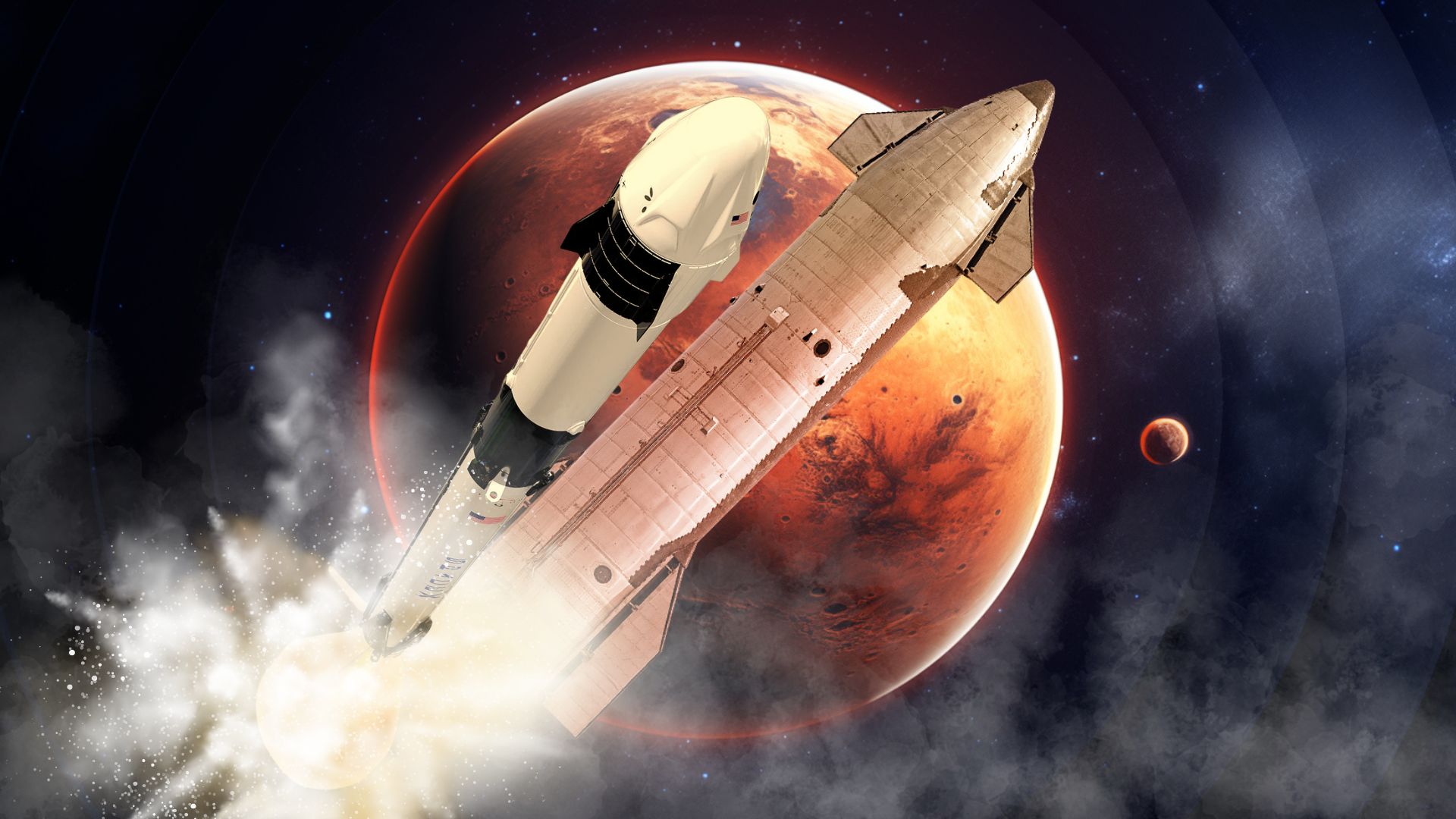
Humanity exploded into space in the middle of the last century, but acceleration only lasted for three decades. The Space Race ended along with the Cold War, the governments of the leading countries stopped spending cosmic budgets on the space industry, and our ambitions as conquistadors of the Solar System greatly subsided.
Only at the beginning of the 21st century, when private billionaire enthusiasts got down to business, did space researchers get a second wind. Today, private aerospace companies are the driving force behind space exploration, and SpaceX is considered the main trendsetter. In this article, we will conduct a Starship/Falcon 9 comparison to confirm or refute the popular belief that these two SpaceX spacecraft are the best today.
What Is The Difference Between Starship And Falcon 9?
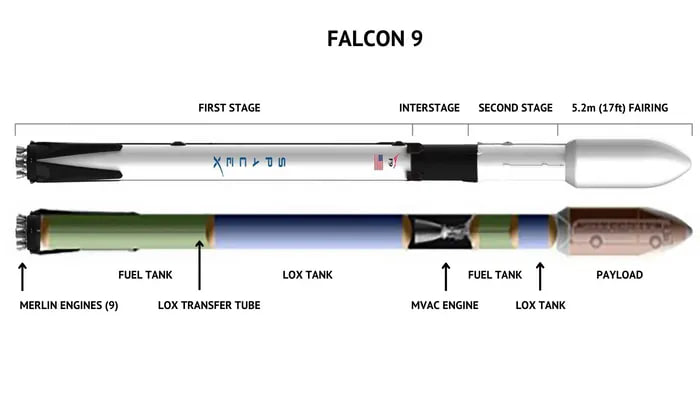
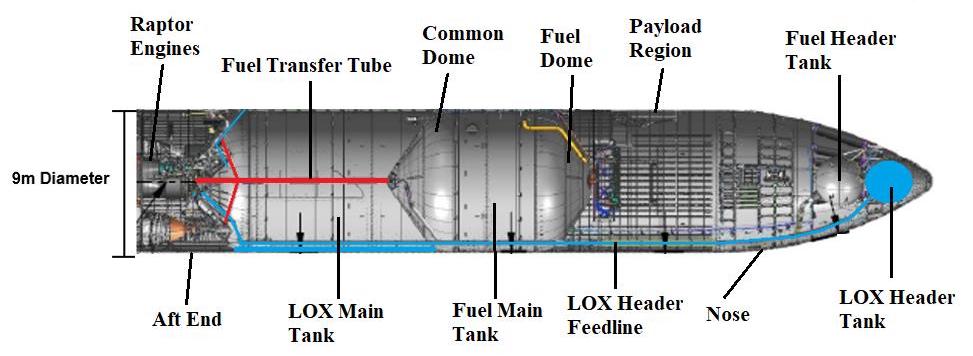
Both spacecraft are heavy launch vehicles, but Starship (SN) is a more complex transport system that includes a booster and a reusable multipurpose spacecraft. It can transport astronauts and cargo not only to low-Earth orbit but also to the Moon, Mars and back, while Falcon 9 (F9) is designed to deliver satellites, manned and cargo ships into orbit and place payloads on a translunar trajectory.
Does Starship Use Falcon 9?
In principle, no. Technically, these are two different systems. Although Falcon 9 has an extended version of Falcon Heavy, it should not be confused with the first stage of Starship Superheavy. Falcon Heavy is a super-heavy rocket based on the F9 first stage but modified to attach two solid rocket boosters to generate more thrust and carry a larger payload. Superheavy does not have side boosters and uses completely different engines.
However, it is worth noting that the development of SN benefited from the experience and technological advances gained from operating F9. For example, the reusability concept that is central to Starship was first applied to the Falcon 9 programme. So, although Starship doesn’t “use” the Falcon 9 in a literal sense, it builds on the technological foundations laid by the Falcon 9’s successes and failures.
Below is the comparison table of the Starship rocket, Falcon Heavy, and Falcon 9, which will help you understand the technological nuances of the three SpaceX creations.
Falcon 9 VS Falcon Heavy VS Starship Comparison Table
| Specs | Falcon 9 | Falcon Heavy | Starship |
| Height | 70 m/ 230 ft | 70 m/230 ft | 121 m / 397 ft |
| Width | 3.7 m/12 ft | 12,2 m/40 ft | 9 m / 29.5 ft |
| Start Mass | 549,054 kg / 1,207,920 lb | 1,420,788 kg / 3,125,735 lb | 6, 000,000 kg/13, 227,735 lb |
| Stages | 2 | 2 + 2 side boosters | 2 |
| Payload to LEO | 22,800 kg / 50,265 lb | 63,800 kg / 140,660 lb | 100,000 – 250,000 kg/ 220,462 –551,155 lb |
| Payload to GTO | 8,300 kg / 18,300 lb | 26,700 kg / 58,860 lb | 150,000 kg/330,693 lb |
| Payload to Mars, TLI | 4,020 kg / 8,860 lb | 16,800 kg / 37,040 lb | 150,000 kg/330,693 lb |
| Engines | 1 stage – Merlin x 9,2 stage – Merlin Vacuum x 1 | Side boosters – Merlin x 18,1 stage – Merlin x 9,2 stage – Merlin Vacuum x 1 | 1 stage – Rator-3 x 33,2 stage – Raptor Vacuum x 6 |
| Fuel | RP1/LOX | RP1/LOX | Methane/LOX |
| Reusability | 1 stage | 1 stage + side boosters | Fully reusable |
| Cost per launch | 62 million USD | 97 million USD | 2–20 million USD |
What Makes SpaceX Starship So Special?
Starship is one of a kind. No one has ever created such an ambitious rocket on Earth before, and if Elon Musk manages to complete the job, humanity will get the space transport system of the future. But let’s discuss things in their right order.
Kingsize
Is the SpaceX Starship the biggest rocket? Yes, its height is 120 m, which is a full ten meters higher than the famous Saturn V. Imagine the height of a 35-story building. That’s what SN is. In addition, after reading our article Starship Vs Saturn V, you will learn that Elon Musk’s rocket plane is superior to the moon rocket in literally everything. But let’s make some concessions for the Saturn V because it was built 50 years ago and had only one goal — launching the Apollo spacecraft to the Moon.
Versatility
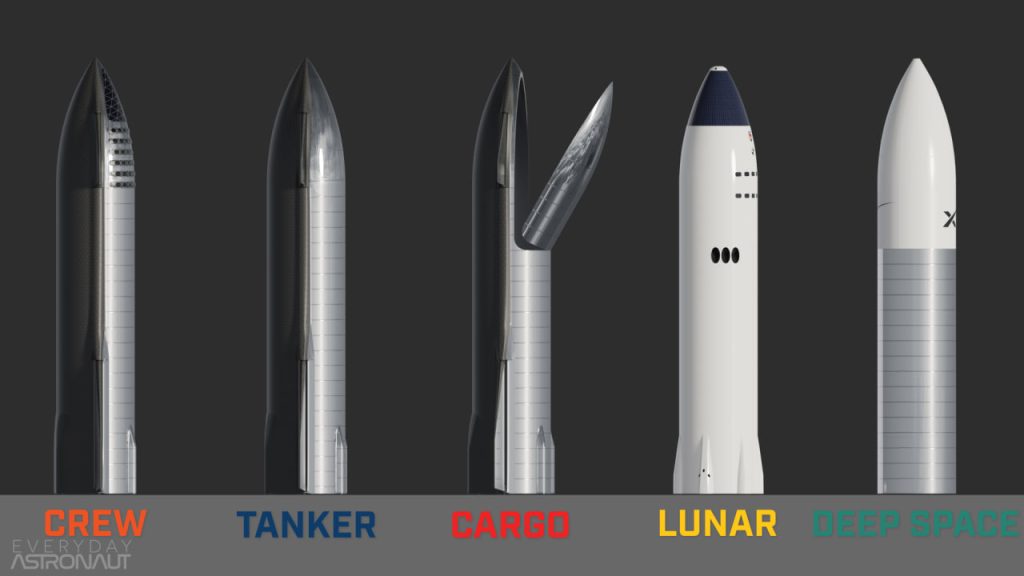
SpaceX Starship vs Falcon 9 offers five modifications of the second stage: crew, cargo, tanker, lunar lander, and deep space spacecraft. Depending on its purpose, the rocket will be able to accommodate up to 100 crew members with fully equipped compartments for long journeys, carry up to 250 tons of payload and 50 tons of return payload, including fuel, act as a modern version of Apollo spacecraft that is, land and take off from the lunar surface, as well as make interplanetary flights to its destination and back!
Full Reusability
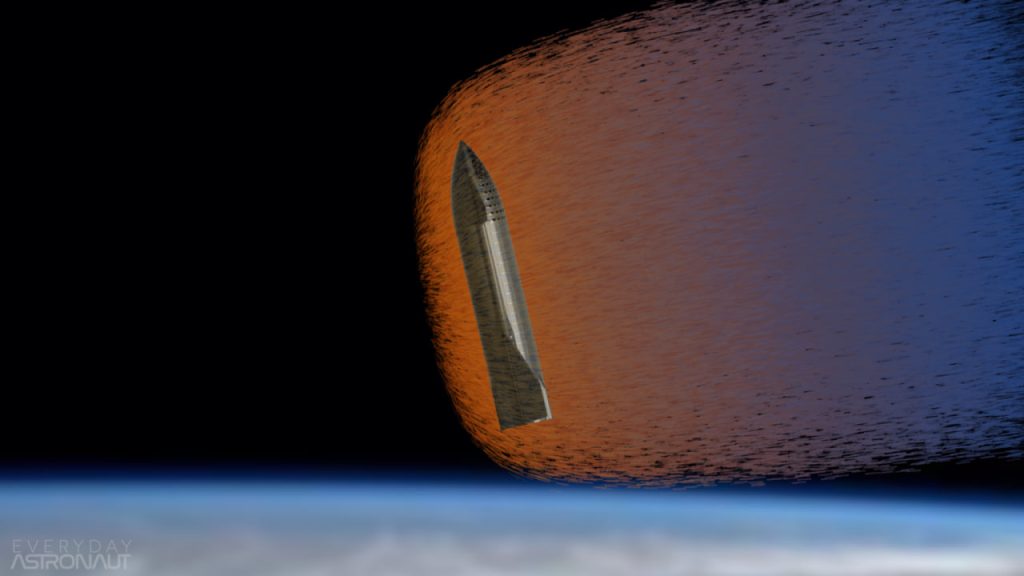
Both the Super Heavy booster and Starship’s second stage can be reused, which is especially important for reducing the cost of launches, as well as for interplanetary travel. SN’s unique feature is the ability to recover its second stage, which is incredibly difficult to accomplish technically. The upper stage moves approximately four times faster than the first stage upon re-entry. This means it can experience 64 times more heat. This is why restoring the upper stage is so difficult. The re-entry technique for SN’s second stage is to slow the stage down. However, it is irrational to do this with the help of engines since deceleration with engines will require exactly the same amount of energy as ascending, which means that the upper stage must be as large as the first one. Starship engineers found another solution.
The second stage will enter the atmosphere belly-first. Elonerones, giant fender liners with air brakes, will help achieve this. They vary drag to control pitch, yaw, and roll. And the 30X stainless steel housing developed by SpaceX will help cope with the destructive force of air friction.
Methane
The transport system uses methane, which is abundantly present on Mars and which we can theoretically mine there, as one of its fuel components so as not to carry fuel onboard. This increases the ship’s payload to 150 tons. That is, SN will be able to transport both cargo and people to the Moon and Mars and back while staying independent of fuel supplies from Earth.
The obvious advantage of methane over liquid hydrogen is that methane provides a high specific impulse, which means greater fuel efficiency and greater thrust per unit of fuel consumed, and its higher density compared to hydrogen allows using smaller fuel tanks. Methane is also more stable than liquid hydrogen and can be stored at more moderate temperatures, which makes it easier to store and transport.
All these features together make Starship vs Falcon 9 the space transport of the future, which will have no counterparts for the next few years, possibly even decades. However, it is worth remembering that this unique development is backed behind by almost 20 years of painstaking work from Space X engineers, technicians, and scientists who have yet to carry their project through.
What Makes Falcon 9 Special?
While SN is only at the beginning of its evolution, F9 has already gone through a long journey of trial and error and has been steadily used for several years. The first version of the Falcon 1 rocket was created in 2006, and it was successfully launched only two years later on the fourth attempt. The latest version of Falcon 9 Block 5 has been in use since 2018. Let’s see what makes it so special.
Super-chilled Propellant
With the release of the first “full thrust” iteration of the F9 in 2015, SpaceX began cooling fuel components more than any other launch vehicle manufacturer. LOX is cooled from −183°C to −207°C, and RP-1 from 21°C to −7°C, which allow to increase the density of the oxidiser and fuel by 8-15% and 2.5%, respectively. The increased density of the components allows the placement of more fuel into the fuel tanks, which, together with the increased engine thrust, significantly increases rocket performance.
ISS And Starlink Mission Support
The Falcon 9 is the main service rocket for Starlink and crewed missions to the ISS. Its payload mass allows it to deliver up to 60 Starlink satellites to LEO in one mission, replenishing the constellation at a record pace.
Since 2020, the F9 Block 5 paired with the Space X Crew Dragon and Cargo Dragon ships has taken the hegemony of delivering crews and resupply missions to ISS from the Russian Soyuz. And in April 2022, Falcon 9 became the first commercial rocket to carry tourists to the ISS, as part of Axiom Space’s AX-1 mission.
Extreme Reliability
Since its first launch in June 2010 and as of early May 2024, the Falcon 9 rocket has been launched 330 times. Of these launches, 327 were completely successful; there were two unsuccessful launches and one partially successful launch. 300 successful missions were completed in a row. Success Rate: 99.2%. None of the launch vehicles that have ever existed can boast such high reliability. Although history knows rockets that have not faced a single failure, all of them are several times inferior to the Falcon 9 regarding the number of launches.
Will Starship Replace Falcon 9?
No doubt, Falcon 9 rightfully ranks first on the list of the most popular rockets, but will it retain its primacy when Starship enters the space arena? Let’s weigh the chances of Falcon 9 vs Starship based on their key characteristics.
Starship VS Falcon 9 Payload
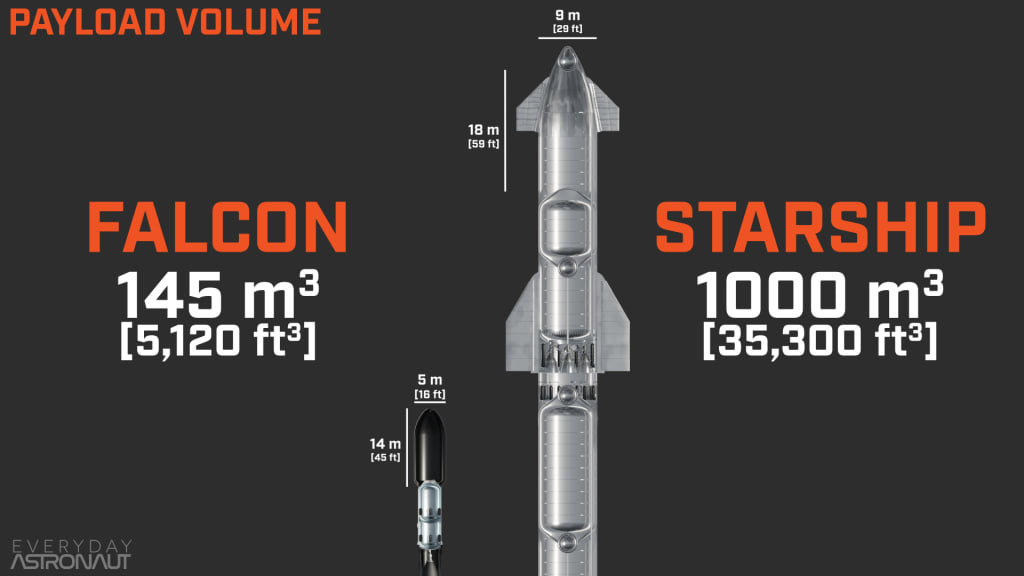
Falcon 9 can carry 22,800 kg into LEO or 15,600 kg when reused, as is the case with Starlink missions. It could send 8300 kg to GTO, or about 7000 kg if reused, and about 4 tonnes to Mars, but it is not certain yet.
But Starship should be able to deliver up to 250,000 kg to LEO with one-time use and up to 150 tons to LEO and GTO when reused… Besides, if you refuel it in orbit, as it’s intended, then it should be able to deliver the same 150 tons of payload to the Moon and even to Mars!!!
Another significant advantage of Starship is its huge payload bay. Falcon 9 and Falcon Heavy share the same fairing, with a diameter of about 5 m and a height of 13.3 m, and with a total useful volume of up to 200 cubic meters. But Starship’s payload bay is a whopping 9m in diameter and 22m high, with a volume of around 1,000 cubic metres. In other words, Starship next to Falcon 9 is a five-star hotel in space. This, of course, is not the Enterprise starship from the Star Trek series, but it’s close.
So, we have one point in favour of Starship.
Starship VS Falcon 9 Thrust-to-weight-ratio
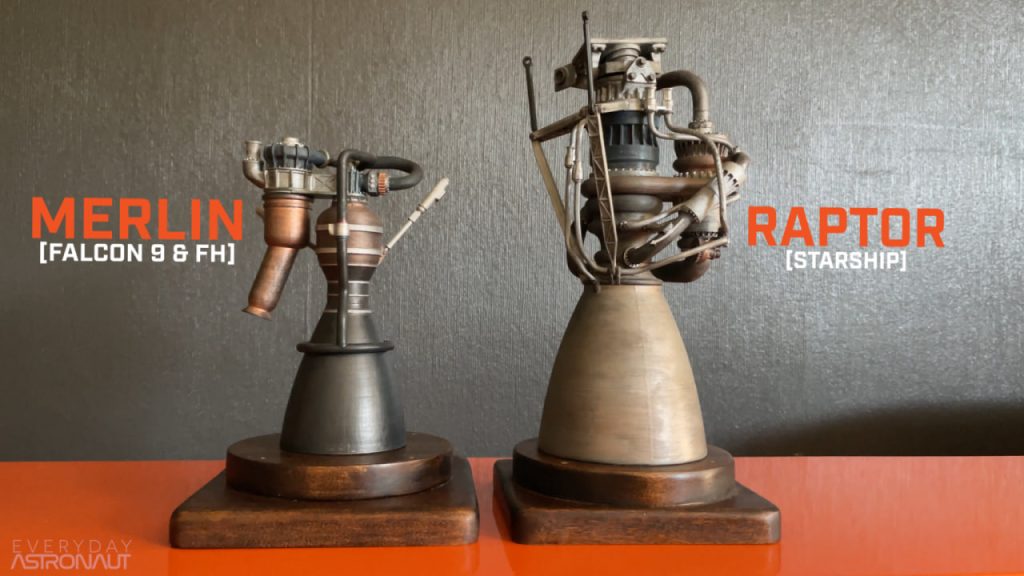
The thrust-to-weight ratio means how many times the thrust produced by the engine can exceed its own weight. And here the Falcon Merlin engine outperforms the Starship Raptor almost 40 times. The Merlin engine has a thrust-to-weight ratio of about 185:1, while the Raptor currently has a thrust-to-weight ratio of about 143:1. Elon Musk hopes that the Raptor’s thrust can be increased, which is a necessary condition; otherwise, the declared payload characteristics will have to be decreased. But Merlin will be hard to beat because it has the highest thrust-to-weight ratio of any liquid rocket engine. So, the score is evened at 1-1.
Starship VS Falcon 9 Cost Per Launch
The Falcon 9 launch cost is $62 million for a one-time use and approximately $50 million for a repeat use. Starship, with its ability to deliver cargo into orbit ten times heavier than Falcon 9, is expected to be launched at an unprecedentedly low cost of 2 – 20 million, depending on the mission purpose and 2nd stage modification. Due to its full reusability, the main costs of launching Starship come down to the cost of fuel and personnel wages.
Thus, in the long term, the cost of launching Starship may be lower than even the cheapest Electron rocket from Rocket Lab. This potentially makes Starship the most cost-effective option for getting into orbit. But how it turns out in practice, only time can tell.
However, this is the second winning point in favour of SpaceX Starship.
What About Naysayers?
“This rocket cannot take off for the third time in a row,” they said about Falcon 1. Then, they did not believe that Falcon 9 could be landed and then, that it would become the most reliable and most frequently launched rocket in the world. Today, they do not believe in Starship and grin after every unsuccessful test. But once again, they are wrong in their predictions.
SpaceX has proven its ability to do insanely complex and unprecedented things many times over. Their ambitious promises may not be delivered on time, but they are being delivered, which is the main thing that matters. This means that the time will come for us to see Starship in action, and this debut will automatically make Falcon 9 compared to Starship obsolete, just like all other launch vehicles. This will inevitably happen, and it will be the beginning of a new space flight era.
References And Additional Information:
- Falcon 9. FIRST ORBITAL CLASS ROCKET CAPABLE OF REFLIGHT/ https://www.spacex.com/vehicles/falcon-9/
- Falcon Heavy rocket https://www.spacex.com/vehicles/falcon-heavy/
- Starship: SERVICE TO EARTH ORBIT, MOON, MARS AND BEYOND https://www.spacex.com/vehicles/starship/
- Orbital rockets https://nextspaceflight.com/rockets/
- Falcon 9 v1.2 or Full Thrust – Block 5 https://www.wevolver.com/specs/falcon-9-v12-or-full-thrust-block-5
- SpaceX’s Starship Project https://impulso.space/blog/posts/spacex-starship-project/
- Falcon 9 vs Falcon Heavy: Differences and Similarities https://impulso.space/blog/posts/falcon-9-vs-falcon-heavy/
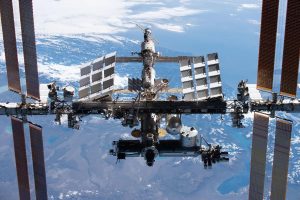
![Best Astrophotos Of Last Week: Pelican Nebula, Milky Way, And More [31 May-6 June] Best Astrophotos Of Last Week: Pelican Nebula, Milky Way, And More [31 May-6 June]](https://orbitaltoday.com/wp-content/uploads/2024/06/Pelican-Nebula-1-300x199.jpg)




Thank you for your comment! It will be visible on the site after moderation.